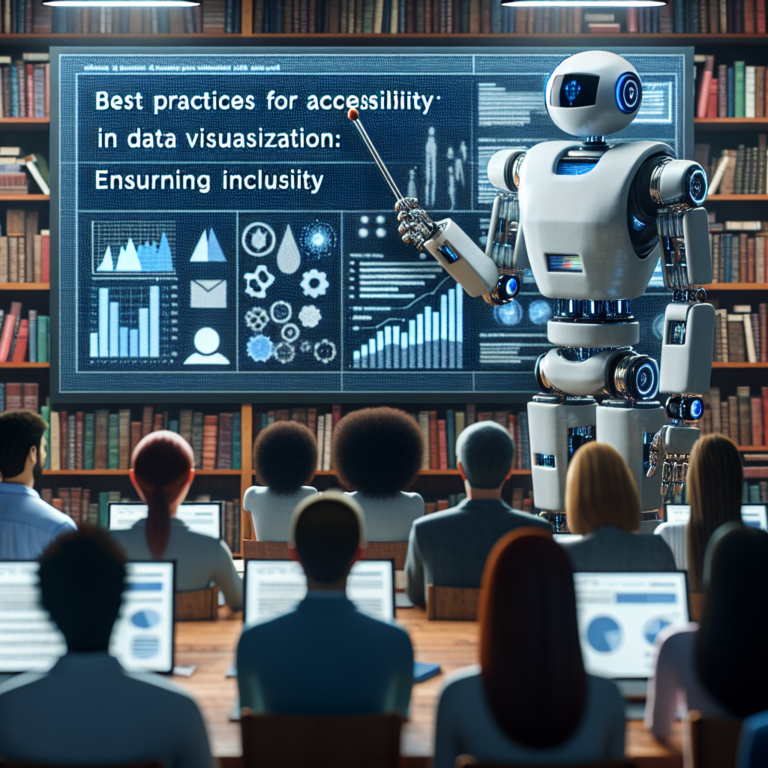1. Understanding Real-Time Data and Its Importance
Real-time data refers to information that is delivered immediately after collection. Unlike batch data, which is collected and processed at intervals, real-time data is continuously updated and provides the latest insights as events occur. This immediacy can be crucial for decision-making in various sectors, including finance, healthcare, and manufacturing.
In today’s fast-paced environment, the ability to access and analyze real-time data can significantly enhance operational efficiency and responsiveness. For instance, in financial markets, real-time data visualization allows traders to make quick decisions based on the latest market trends. Similarly, in healthcare, real-time data can alert medical staff to changes in a patient’s condition, facilitating prompt intervention.
Integrating real-time data into visualizations not only aids in immediate insights but also enhances the decision-making process by providing a dynamic view of data changes over time. This dynamic approach allows organizations to respond more swiftly to market changes, customer behavior, or any critical incidents that require immediate action.
Moreover, the importance of real-time data extends to its role in predictive analytics, where it can help forecast future trends based on current data streams. This predictive capability is particularly valuable in areas like supply chain management and predictive maintenance.
Overall, the integration of real-time data into business operations and its visualization are pivotal for maintaining a competitive edge in today’s data-driven world. By enabling immediate insights and responses, organizations can optimize processes, reduce costs, and improve outcomes.
2. Technologies Enabling Real-Time Data Visualization
The landscape of real-time data visualization is supported by a variety of technologies that ensure data is not only collected but also effectively visualized in real-time. These technologies range from data streaming platforms to advanced visualization tools and libraries.
Data streaming platforms like Apache Kafka, Amazon Kinesis, and Google Pub/Sub provide the infrastructure necessary for handling large volumes of data in real-time. These platforms allow for the continuous ingestion, processing, and analysis of data streams, making them indispensable for real-time analytics.
On the visualization front, tools and libraries such as Apache Superset, Grafana, and D3.js play a crucial role. These tools offer powerful features for creating interactive and dynamic visualizations that update as new data flows in. For example, Grafana is widely used for monitoring real-time metrics through dashboards that refresh at intervals you can specify, from seconds to minutes.
To illustrate, consider a simple example using Python with the Bokeh library, which is popular for its ability to provide elegant and interactive visualizations. Here’s a basic code snippet to create a real-time updating plot:
from bokeh.plotting import figure, curdoc
from bokeh.driving import linear
p = figure(plot_width=400, plot_height=400)
r = p.line([], [], color="firebrick", line_width=2)
@linear()
def update(step):
r.data_source.stream({'x': [step], 'y': [step]}, rollover=15)
curdoc().add_root(p)
curdoc().add_periodic_callback(update, 1000)
This code sets up a simple line graph that updates every second, ideal for demonstrating real-time data visualization. The `stream` method in Bokeh efficiently handles new data points by appending them to the existing dataset, which is crucial for performance in real-time applications.
Overall, the integration of these technologies not only supports the visualization of real-time data but also enhances the ability to derive immediate insights from continuously updated data streams. This capability is essential in environments where timeliness of data interpretation is critical to success.
2.1. Data Streaming Platforms
Data streaming platforms are essential for integrating real-time data into visualizations. These platforms handle vast streams of data, enabling the continuous flow and immediate processing that are crucial for real-time insights.
Popular platforms like Apache Kafka, Amazon Kinesis, and Google Pub/Sub are designed to facilitate real-time data collection, aggregation, and processing. Apache Kafka, for instance, allows for high-throughput data pipelines and streaming analytics, essential for applications requiring quick data turnaround.
These platforms support various data sources and consumers, making them versatile for different use cases. For example, they can integrate with traditional databases, cloud services, and IoT devices, providing a robust infrastructure for real-time data visualization.
Key features of these platforms include:
- Scalability: They can handle increasing volumes of data without degradation in performance.
- Low Latency: Data is processed in milliseconds, enabling immediate insights.
- Reliability: They ensure data integrity and availability even in the event of hardware failure.
Understanding and utilizing these platforms can significantly enhance the capability to visualize and react to real-time data, thereby optimizing decision-making processes in any data-driven organization.
2.2. Visualization Tools and Libraries
Visualization tools and libraries play a pivotal role in real-time data visualization, transforming raw data into comprehensible and actionable visuals. These tools are essential for delivering immediate insights that are critical for rapid decision-making.
Libraries such as D3.js, Plotly, and Highcharts offer extensive capabilities for creating interactive charts and graphs that update in real-time. D3.js, for instance, is highly favored for its flexibility and powerful data-driven approach to DOM manipulation, making it ideal for complex visualizations that require dynamic updates.
For those who prefer a more integrated environment, tools like Tableau and Power BI provide robust platforms that support real-time data feeds. These tools come with built-in connectivity to stream data from various sources, including popular data streaming platforms. They also offer extensive customization options, allowing users to tailor their dashboards and reports to meet specific organizational needs.
Here are some key benefits of using these tools:
- Interactivity: Users can interact with the visual data, drilling down into metrics or adjusting views to better understand trends.
- Customizability: Many tools offer extensive APIs for customization, enabling the creation of tailored visualization experiences.
- Accessibility: Simplified sharing options make these visualizations easily accessible across departments, enhancing collaboration.
Effectively integrating these tools into your data visualization strategy can significantly enhance the clarity and immediacy of the insights derived from your real-time data, thereby supporting more informed and timely decision-making across your organization.
3. Designing Effective Real-Time Dashboards
Designing effective real-time dashboards is crucial for maximizing the impact of real-time data visualization. These dashboards serve as the primary interface for users to interact with and make sense of the data as it flows in.
Firstly, clarity is key. Dashboards should be designed to display the most relevant information with clear visual hierarchies. This means prioritizing data that offers the most value for decision-making and presenting it in an easily digestible format. For instance, critical metrics should be prominent and updates noticeable with minimal user effort.
Secondly, responsiveness and update frequency are essential. Dashboards must refresh data at a pace that matches the speed of data generation to maintain immediate insights. This requires a backend capable of processing high volumes of data in real-time and a frontend that can render updates smoothly without user-perceived lag.
Here are some key points to consider when designing these dashboards:
- User Customization: Allow users to customize what data they see and how it is displayed to suit their specific needs.
- Interactivity: Include interactive elements such as drill-downs and filters to enable users to explore the data more deeply.
- Alerts and Notifications: Implement alerts to notify users of significant events or changes in the data that require their attention.
By focusing on these aspects, you can ensure that your dashboards not only display data in real-time but also enhance the decision-making process, making them invaluable tools in any data-driven environment.
4. Case Studies: Real-Time Visualization in Action
Real-time data visualization is not just a theoretical concept but a practical tool that has transformed various industries. Here, we explore several case studies that highlight the impact of integrating real-time data into visualizations.
In the financial sector, real-time dashboards have revolutionized trading floors. Traders use these dashboards to monitor market changes instantaneously, allowing for swift decisions that capitalize on market movements. For example, a major stock exchange implemented a system that visualizes trading volumes and stock prices in real-time, significantly enhancing traders’ ability to react to market volatility.
The healthcare industry has also seen substantial benefits from real-time data visualization. Hospitals use it to monitor patient vitals and lab results continuously. This immediate access to data can be life-saving in critical care situations. One notable instance involved a healthcare provider using real-time visualizations to detect sepsis in hospitalized patients faster than traditional monitoring methods, thereby improving patient outcomes.
In the field of telecommunications, real-time data visualization aids in network management by displaying traffic data, allowing network operators to identify and address issues as they occur. A leading telecom company used a real-time monitoring system to manage network load effectively, preventing outages during peak usage times and improving customer satisfaction.
These examples demonstrate the crucial role of real-time data visualization in enhancing operational efficiency and decision-making across different sectors. By integrating real-time data into their systems, organizations can not only respond more quickly to immediate challenges but also plan more effectively for the future.
Overall, the practical application of real-time data visualization provides compelling evidence of its value in delivering immediate insights that are critical for dynamic and high-stakes environments.
5. Best Practices for Integrating Real-Time Data
Integrating real-time data into your systems and processes requires careful planning and execution to ensure efficiency and accuracy. Here are some best practices to consider:
1. Establish Clear Data Goals: Before integrating real-time data, define what insights you aim to derive and how they will impact decision-making processes. This clarity will guide the data integration strategy and ensure relevance.
2. Choose the Right Tools: Select tools and technologies that can handle the volume, velocity, and variety of your data. Ensure they are scalable and can integrate seamlessly with existing systems.
3. Data Quality Management: Implement processes to continuously monitor and maintain the quality of real-time data. This includes validating incoming data streams for accuracy and completeness.
4. Real-Time Analytics: Utilize analytics tools that can process and visualize data in real-time. These tools should provide actionable insights that can prompt immediate responses.
5. Security Measures: Real-time data systems are vulnerable to security breaches. Ensure robust security protocols are in place to protect data integrity and privacy.
6. Continuous Testing and Optimization: Regularly test the system for performance and make adjustments as needed. This iterative process helps in adapting to new challenges and improving data handling capabilities.
By adhering to these best practices, organizations can effectively harness the power of real-time data visualization to gain immediate insights and maintain a competitive edge in their respective industries.
6. Future Trends in Real-Time Data Visualization
The field of real-time data visualization is rapidly evolving, driven by advancements in technology and growing data demands. Here are some key trends that are shaping the future of this dynamic field:
1. Increased Adoption of AI and Machine Learning: Artificial intelligence (AI) and machine learning (ML) are becoming integral in processing and visualizing large datasets in real time. These technologies enable predictive analytics and smarter data insights, enhancing decision-making processes.
2. More Interactive and Immersive Visualizations: As user expectations grow, there is a push towards more interactive and immersive visualization experiences. Technologies like augmented reality (AR) and virtual reality (VR) will play a significant role in making data visualizations more engaging and intuitive.
3. Advancements in Real-Time BI Tools: Business intelligence (BI) tools are expected to become more sophisticated, offering more powerful real-time analytics capabilities. This will allow businesses to react even faster to market changes and customer behaviors.
4. Growth of Edge Computing: With the rise of IoT devices, edge computing will become crucial for handling real-time data locally, reducing latency, and improving response times in critical applications.
5. Enhanced Data Security Measures: As real-time data systems become more prevalent, ensuring the security and privacy of data will be paramount. Expect to see enhanced security protocols and more robust compliance measures being implemented.
These trends indicate a future where real-time data visualization is not only about displaying data but also about integrating sophisticated analytical tools that provide immediate insights and a competitive edge. As these technologies continue to develop, they will undoubtedly transform how organizations operate and make decisions.



